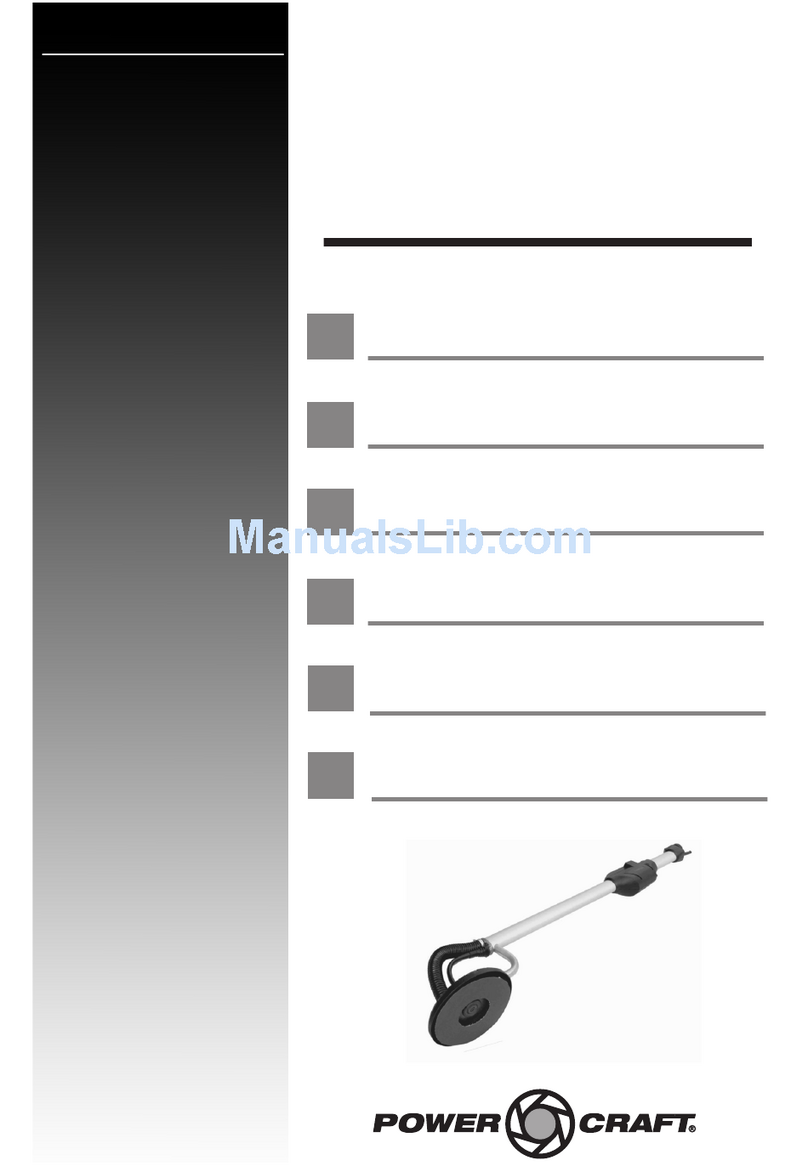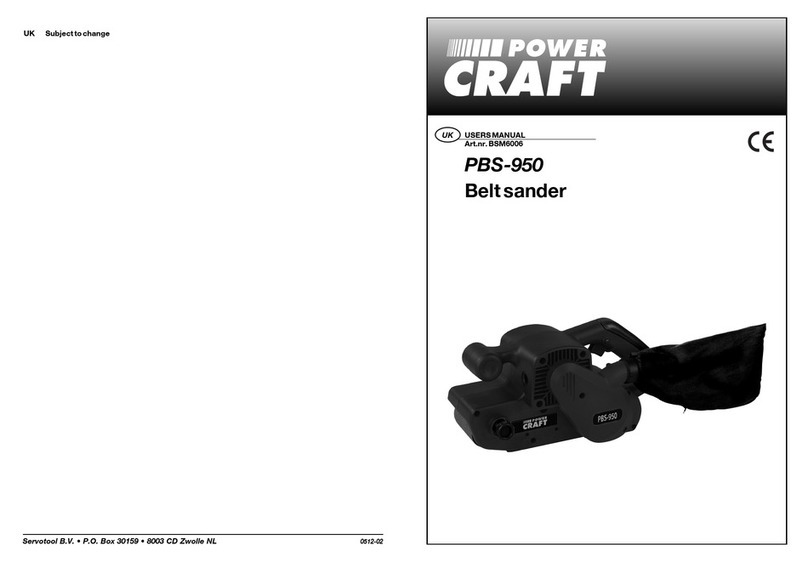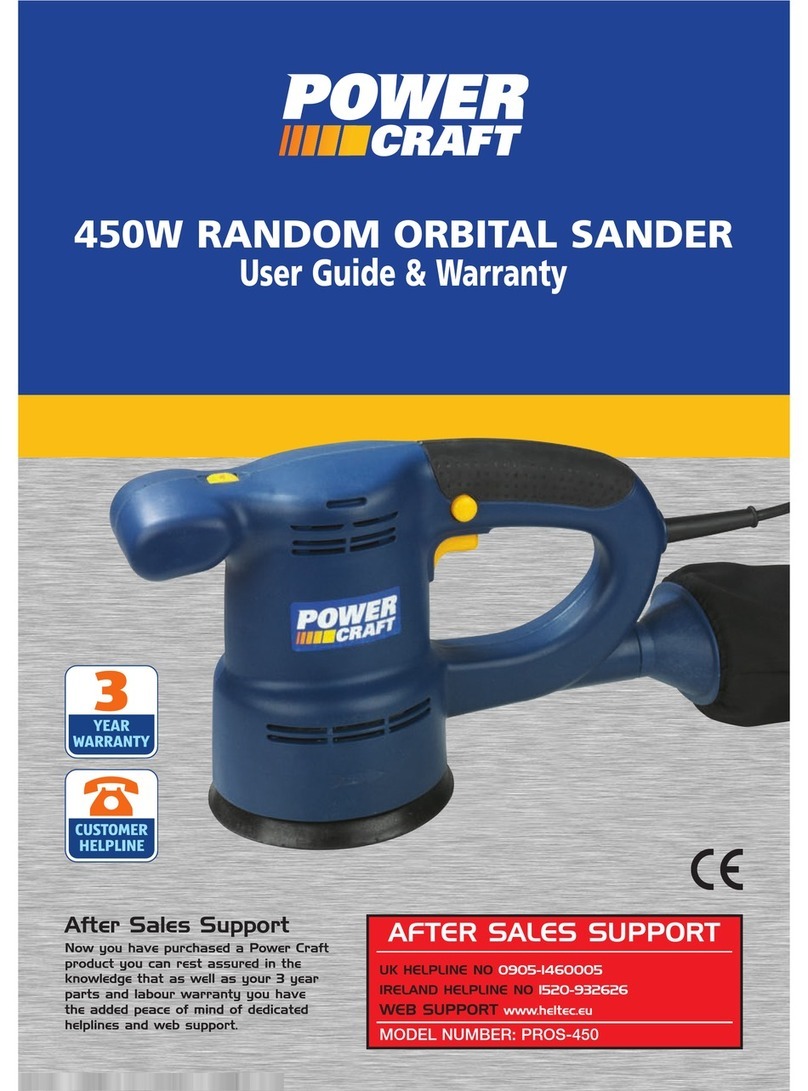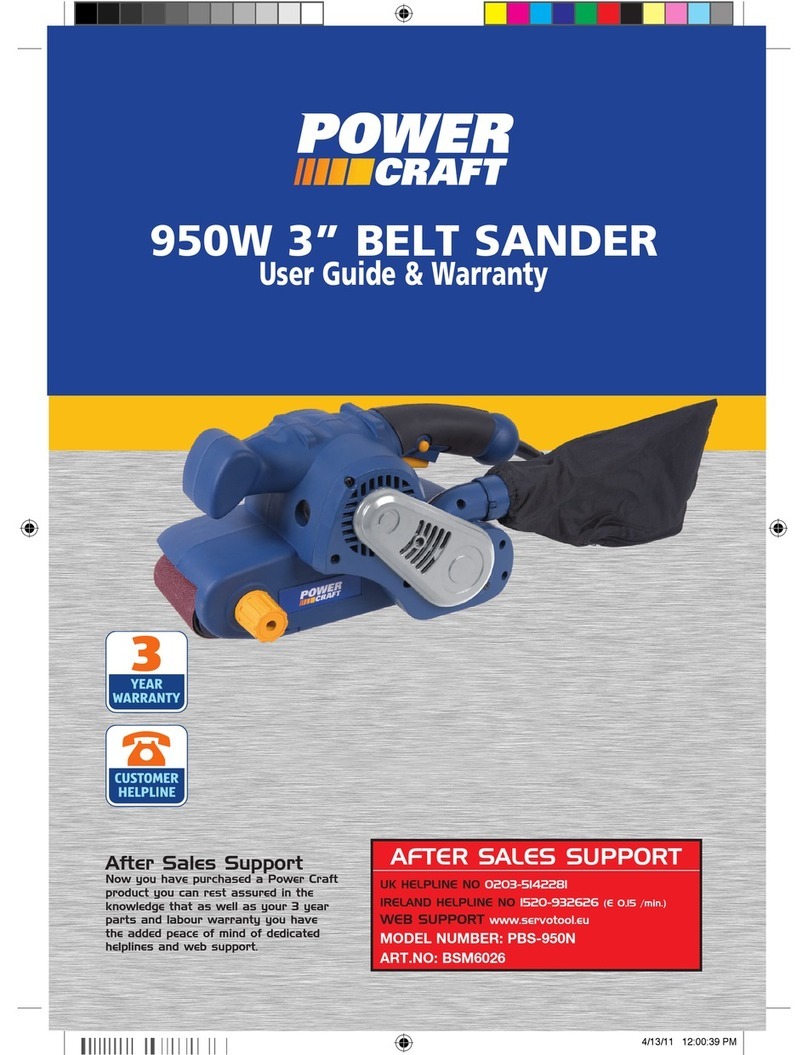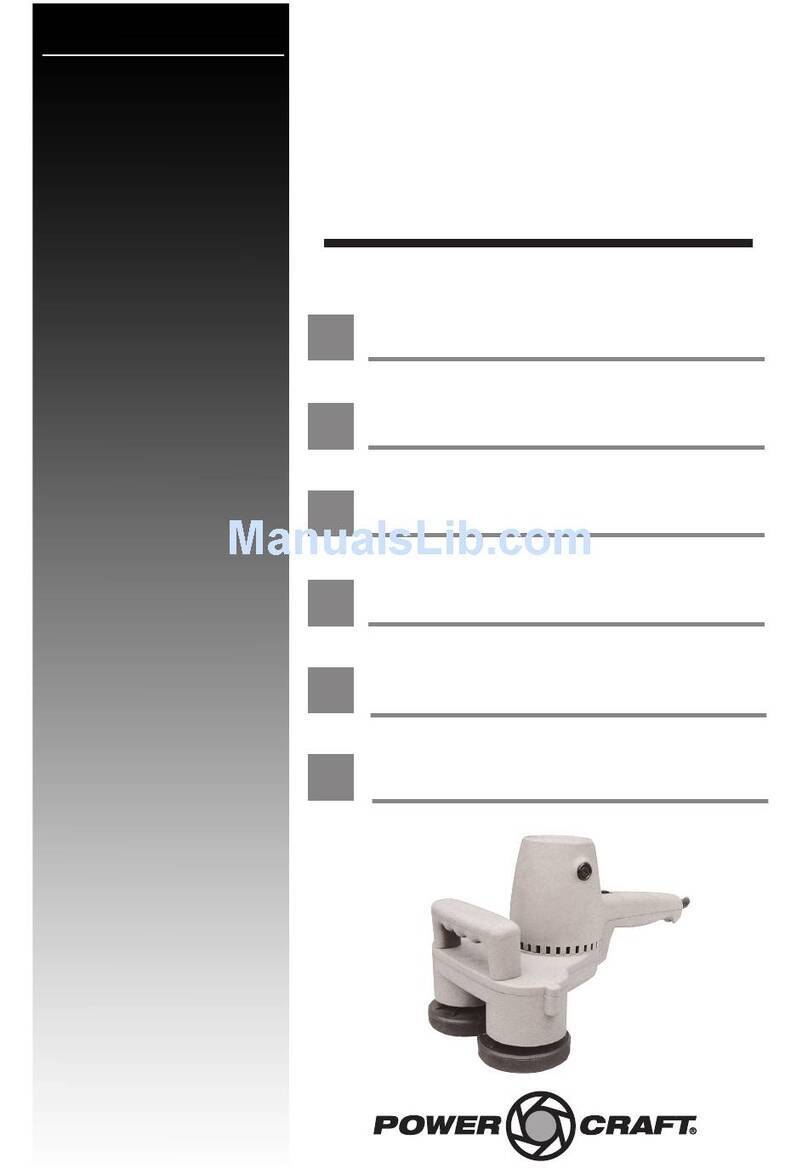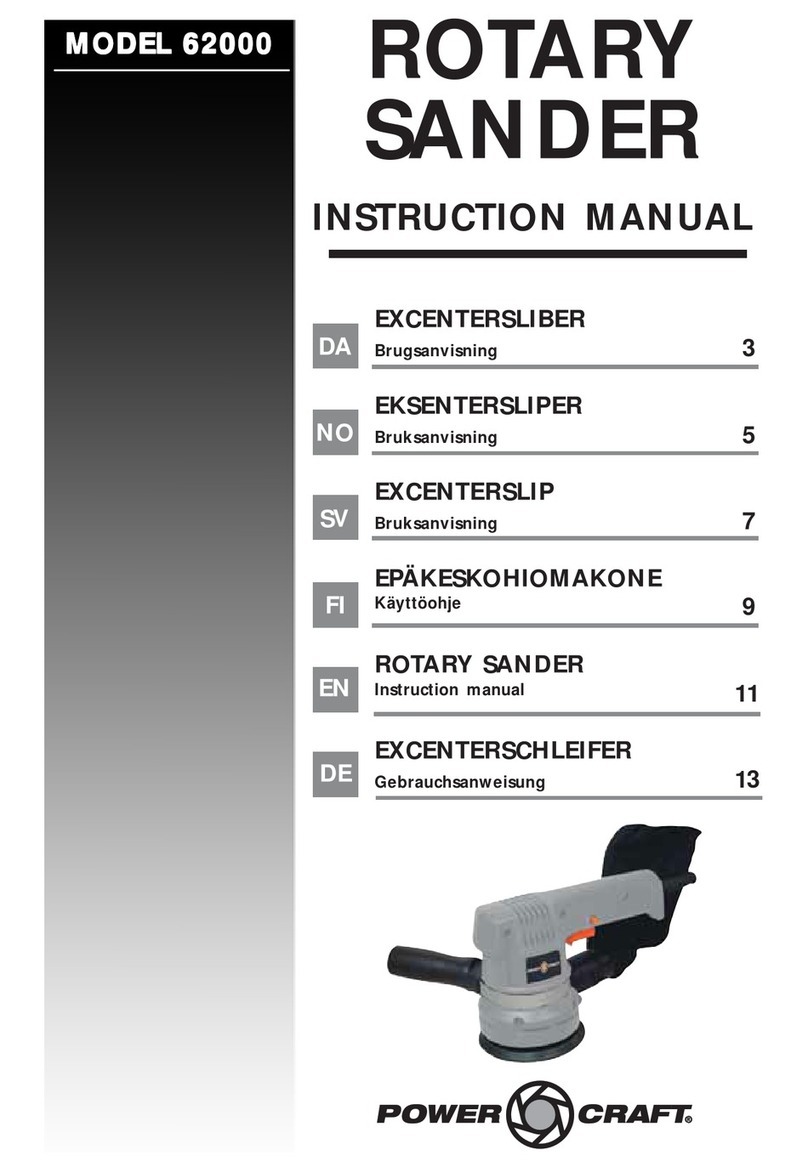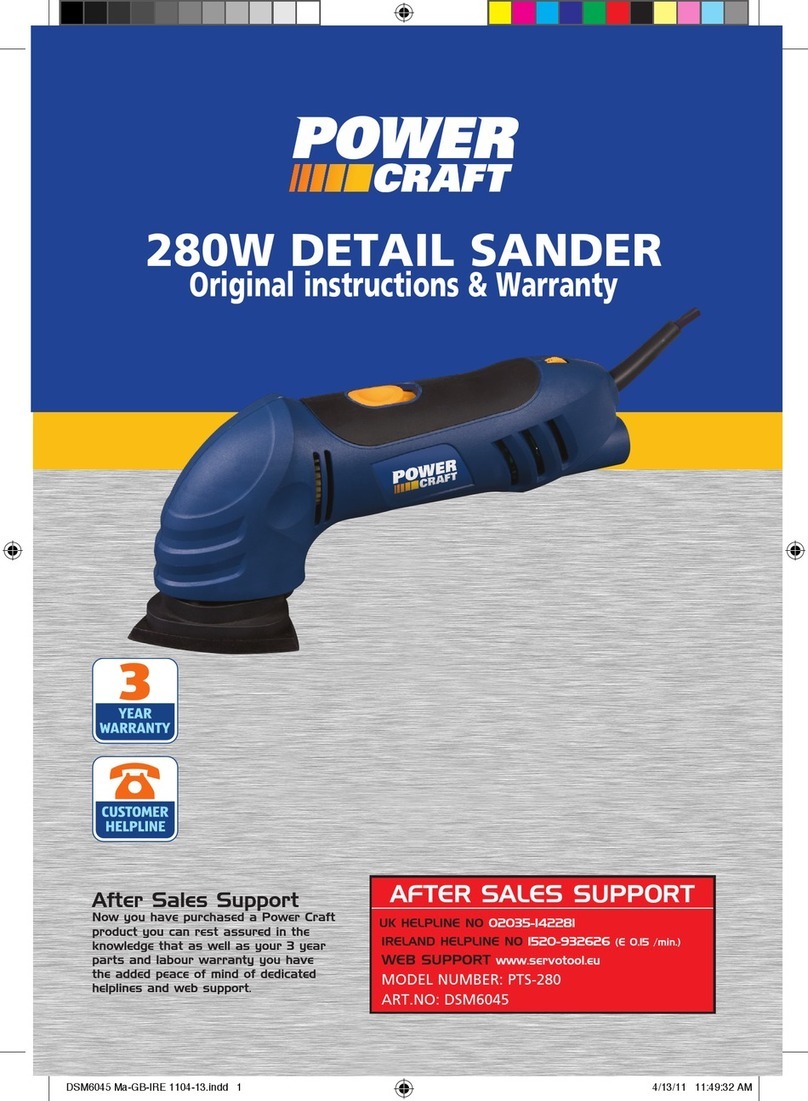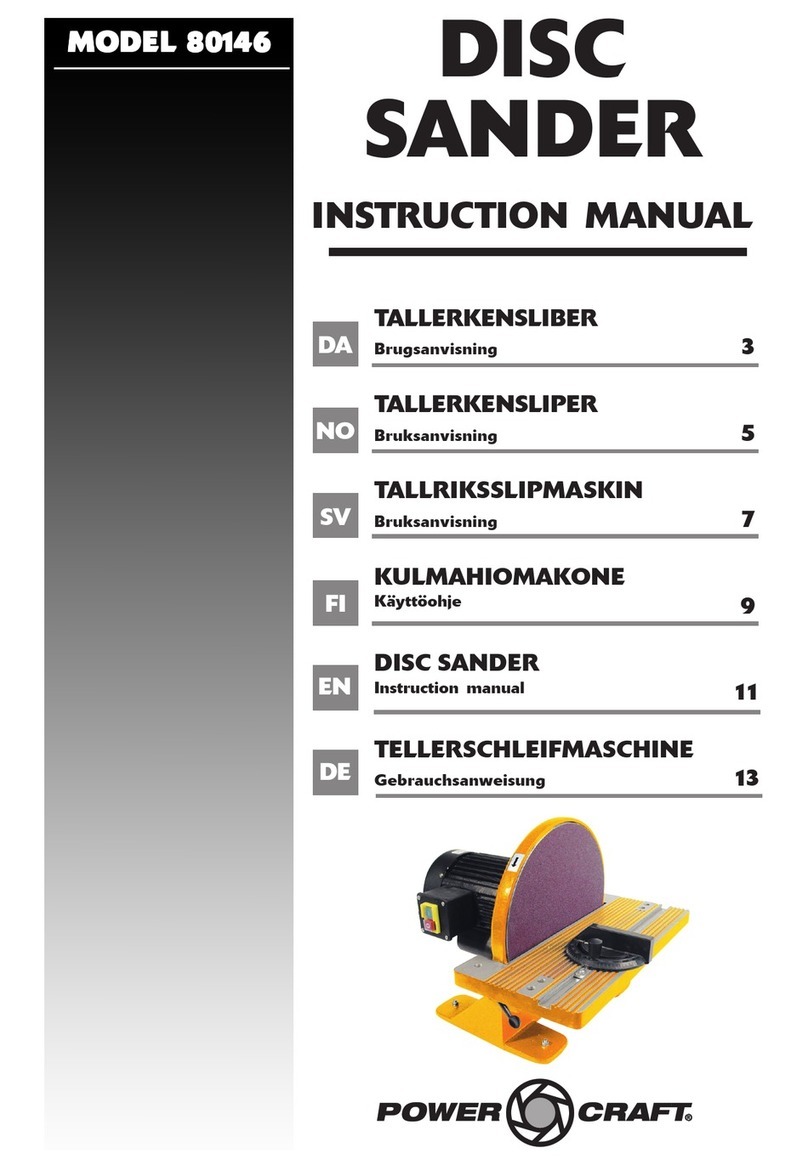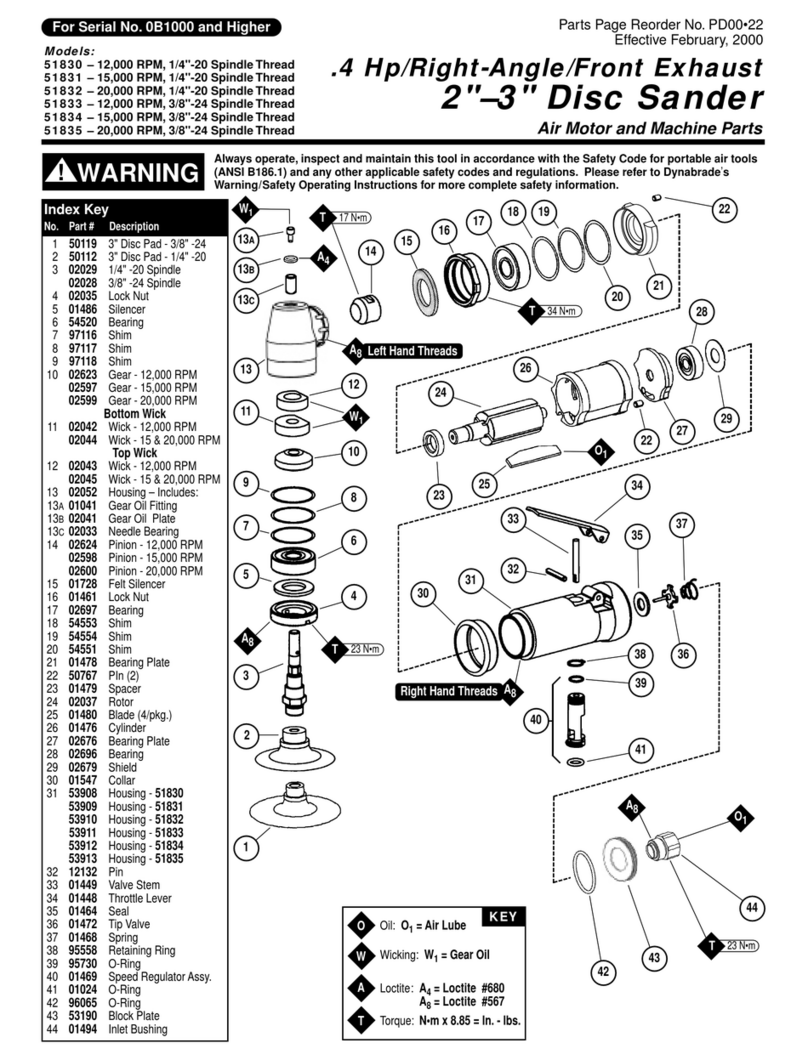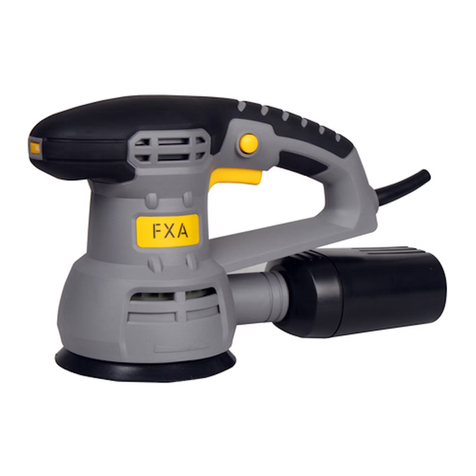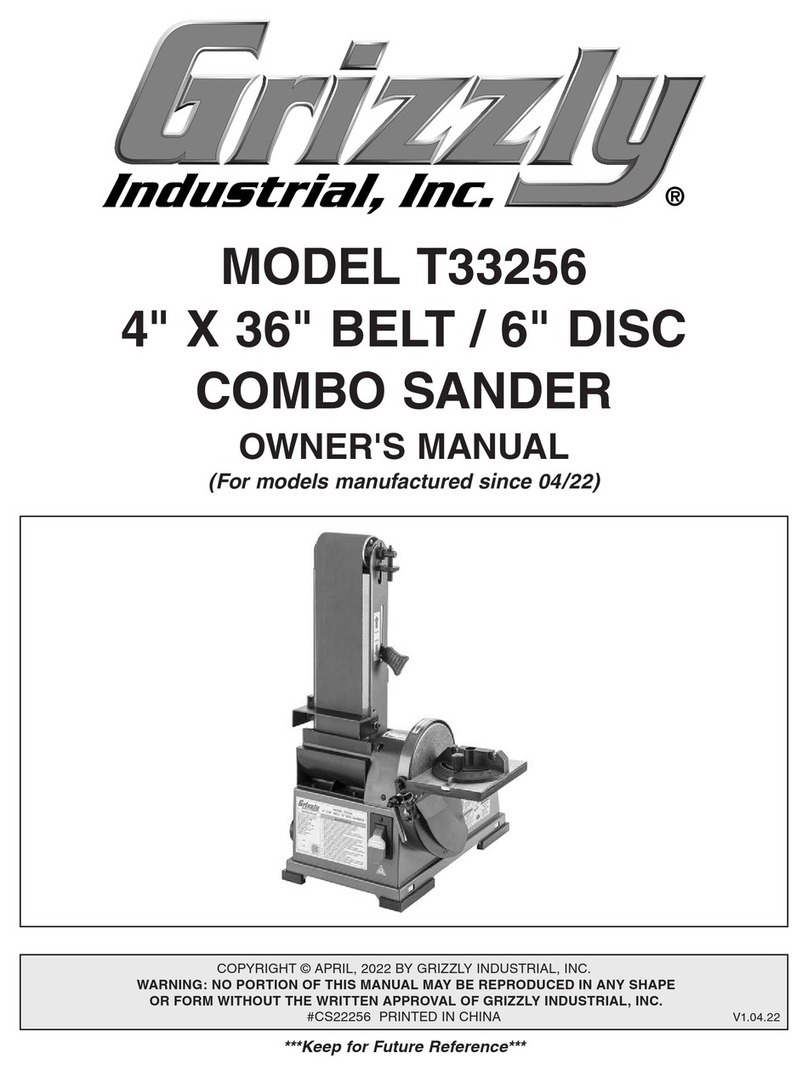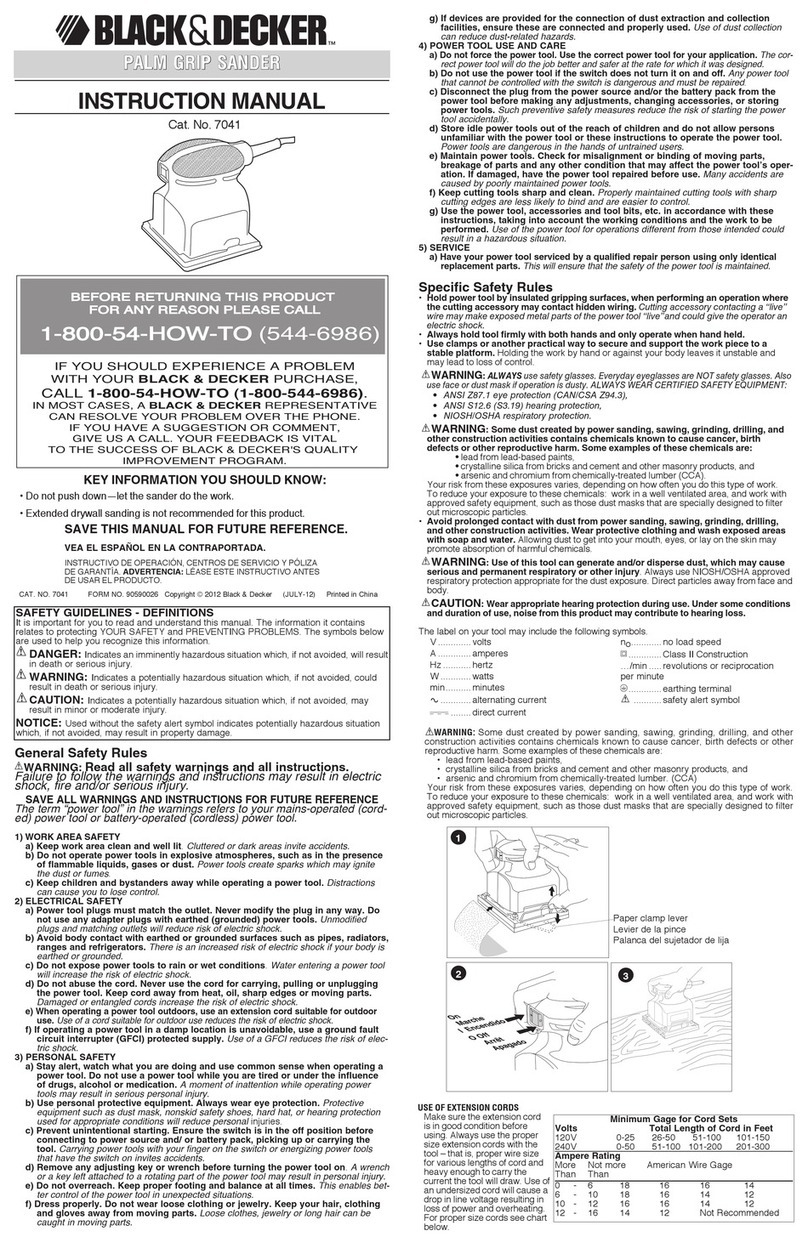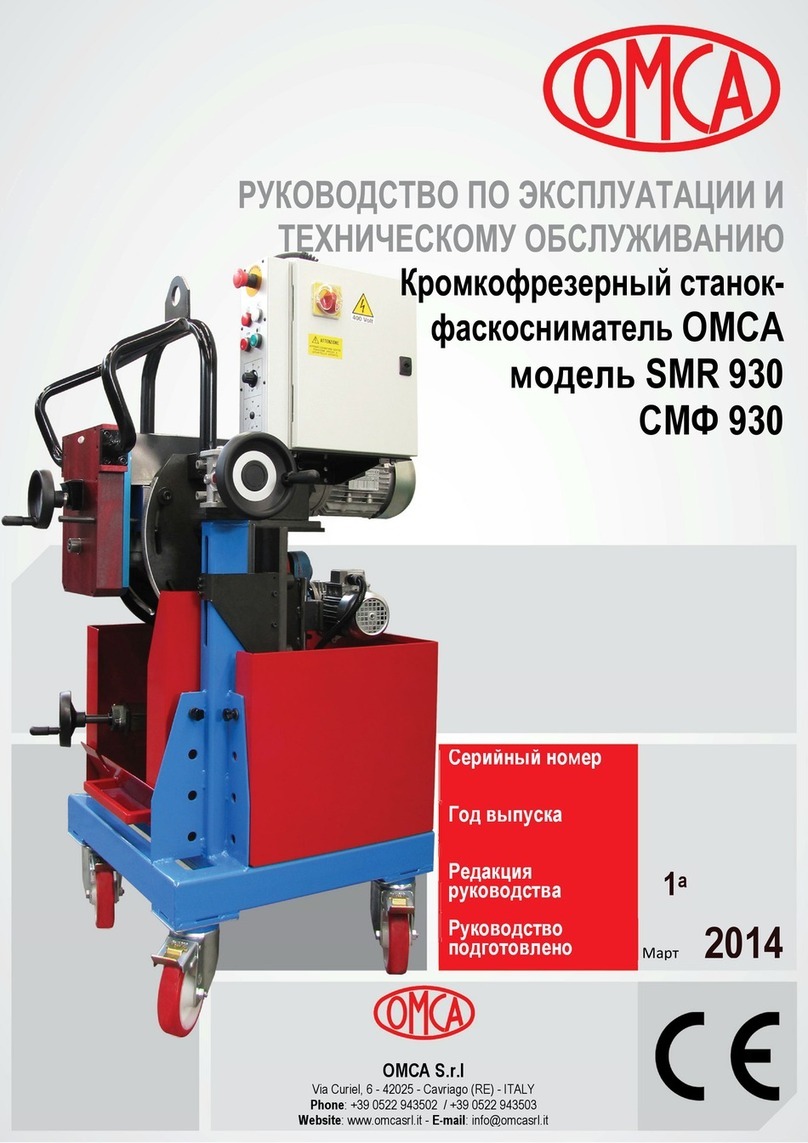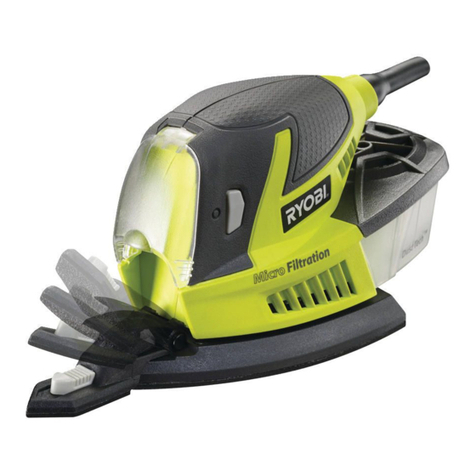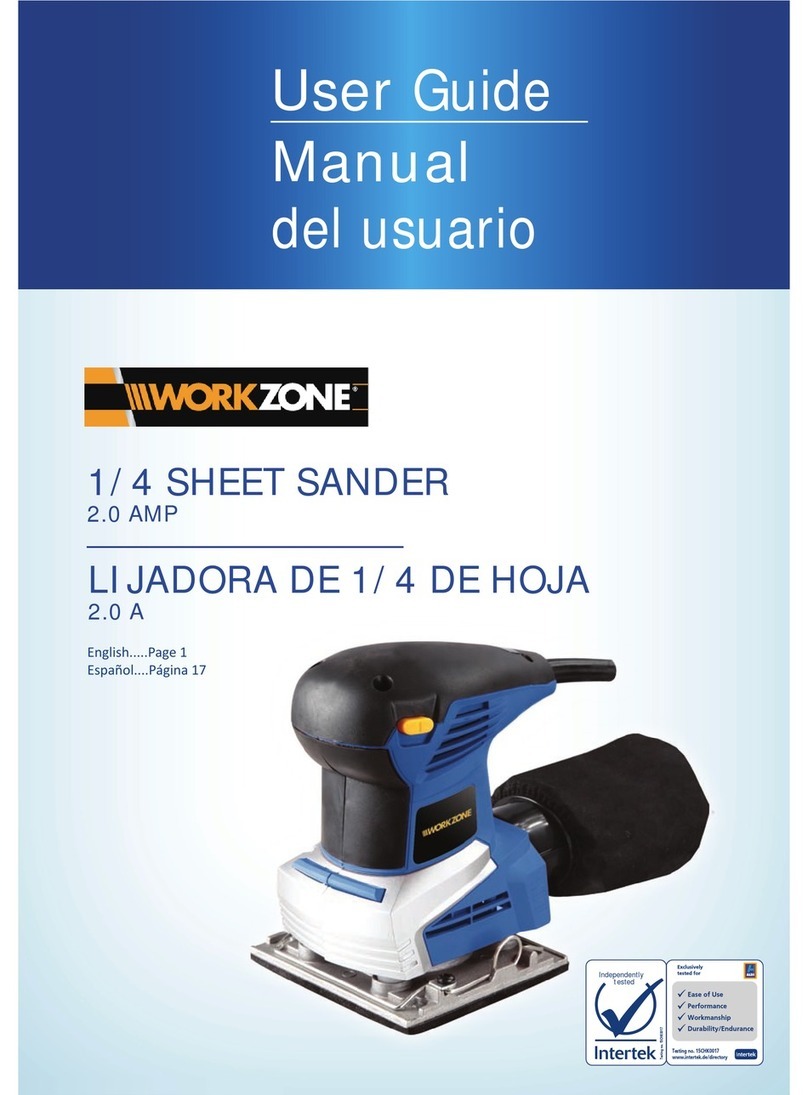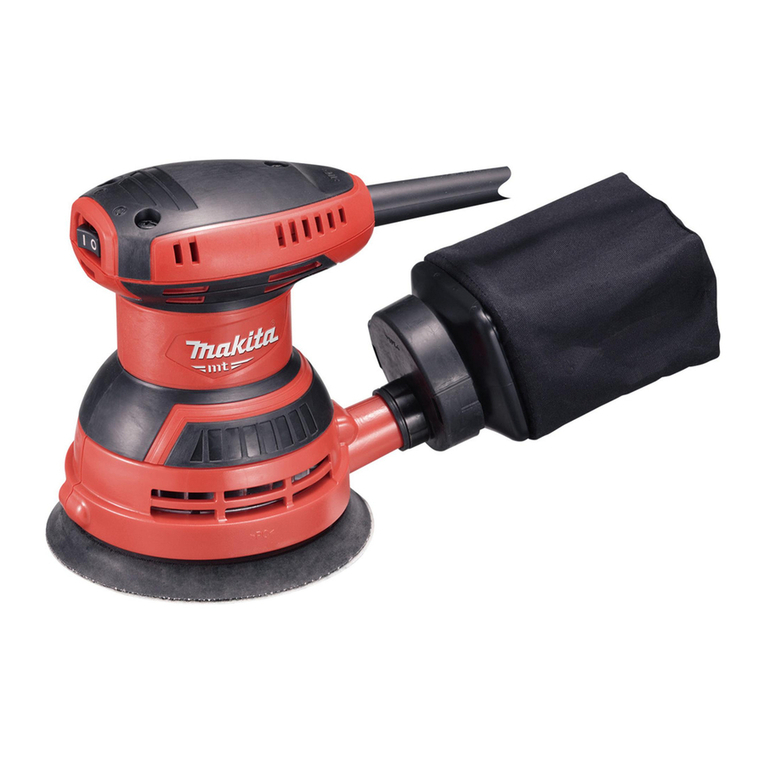Helpline No. UK / Northern Ireland 0870 7323023 • Rep. Ireland 1800 481005
Web support: www.omegawolf.com/powercraft
Model Number: PBS-950N
13
Operation
Always observe the safety instructions and the applicable
regulations.
Selecting the sanding paper
Generally speaking, coarse-grained paper (grain size 60 to 100) removes a lot
of material whereas fine-grained paper (grain size 180 to 250) is used for
finishing. An irregular surface is sanded with coarse-grained paper first of all
until it is no longer coarse. Subsequently a medium size grain (grain size 100
to 180) is used to remove scratches, and then the surface is finished with a
fine-grained paper. Sand the surface until it is absolutely plain.
Setting the sanding belt
If the sanding belt is not even with the outside edge of the housing, it has to
be adjusted.
A badly fitted sanding belt can damage the sanding belt itself as
well as the machine housing.
For this purpose turn the adjusting knob (14, page 5) to the left or right. By
turning the knob clockwise, the sanding belt is moved to the inside, whereas
turning the knob anti-clockwise will move it to the outside.
Switching the machine on and off
• Press the operating switch (7, page 5) and keep it pressed to switch the
machine on.
• Release the operating switch again to switch the machine off.
For continuous operation, the locking button (8, page 5) has to be pressed:
• Use the operating switch (7, page 5) to switch on the machine.
• Press the locking button (8, page 5) and let go of the operating switch.
• Press the operating switch again to switch the machine off.
Handles
The rear and front handles have been fitted for safe handling of the belt
sander. Always use both hands to hold the belt sander.
Speed controller
The speed of the sanding belt can be adjusted by means of the speed
Helpline No. UK / Northern Ireland 0870 7323023 • Rep. Ireland 1800 481005
Web support: www.omegawolf.com/powercraft
Model Number: PBS-950N
08
Safety instructions
General safety instructions
Caution! Read all instructions. The non-observation of the instructions
mentioned below may cause an electric shock, fire and/or severe injuries. The
term “electric tool” mentioned below refers to mains-operated electric tools
(with power cord) and to rechargeable electric tools (without power cord).
Keep these instructions for use in a safe place.
1) Workplace
(a) Keep your workplace clean and tidy. Untidy and badly illuminated work
areas may lead to accidents.
(b) Do not operate this machine in potentially explosive environments
containing combustible liquids, gases or dusts. Electric tools send out
sparks which may ignite dust or vapours.
(c) Keep children and other persons away from the electric tool during use.
When distracted, you may lose control over the apparatus.
2) Electric safety
(a) The plug of the machine has to be suitable for the socket. The
connector may not be modified in any way. Do not use an adapter plug
together with earthed devices. Unchanged connectors and fitting
sockets reduce the risk of an electric shock.
(b) Avoid body contact to earthed surfaces, such as pipes, radiator, stoves
and refrigerators. There is a higher risk of an electric shock, if your body
is earthed.
(c) Keep the machine clear of rain or humidity. The penetration of water
into an electrical device increases the risk of an electric shock.
(d) Do not use the cable for unintended purposes, to carry or suspend the
machine or to pull the connector out of the socket. Keep the cable clear
of heat, oil, sharp edges or any moving parts. Damaged or entangled
cables increase the risk of an electric shock.
(e) When using an electric tool in the open, use an extension cable only
which has been approved for outdoor use. The use of an extension
cable suitable for use in the open will reduce the risk of an electric
shock. Always use an RCD (redicual circuit device or circuit breaker).
(f) Hold the machine at the insulated gripping surfaces as the belt grinder
may hit its own power cord. Damaging a live cable may make metal
machine parts live, which may lead to an electric shock.
3) Personal safety
(a) Please pay attention and watch what you are doing, and carry out the
